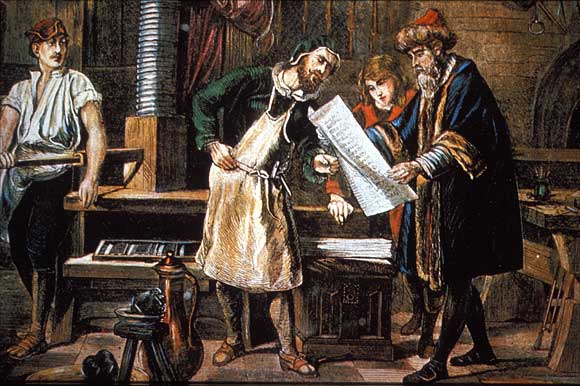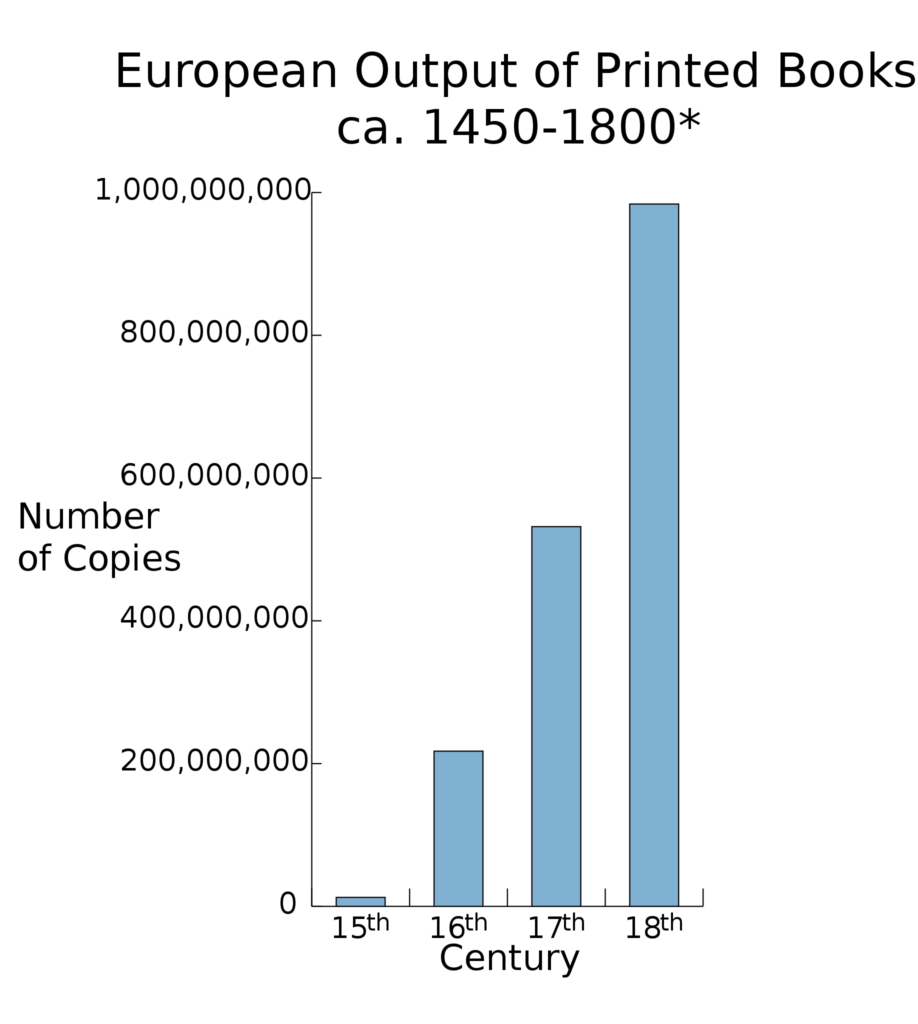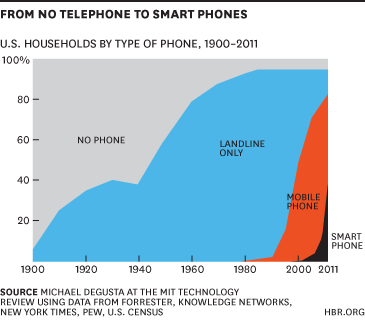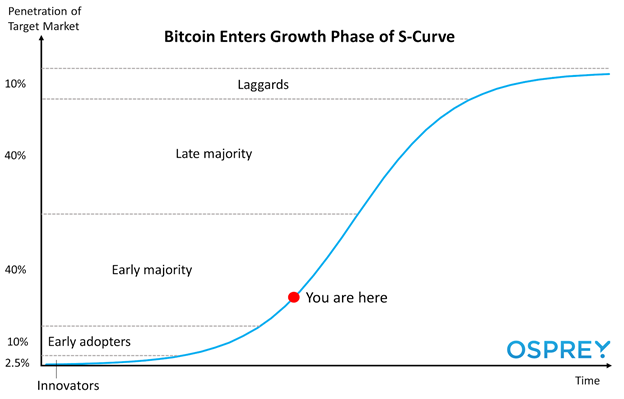Revolutions Take Time
An infinite number of works which very few students could have consulted in Paris, or Athens or in the libraries of other great university towns, are now translated into all languages and scattered abroad among all the nations of the world.
Revolutions take time.
Profound innovation occurs more slowly than our imaginations, once we are excited by the possibilities.
Take the printing press.
Gutenberg’s invention first appeared around 1440 but took more than 50 years to spread through Europe.
Here’s a map depicting its physical adoption over the 2nd half of the 15th century:
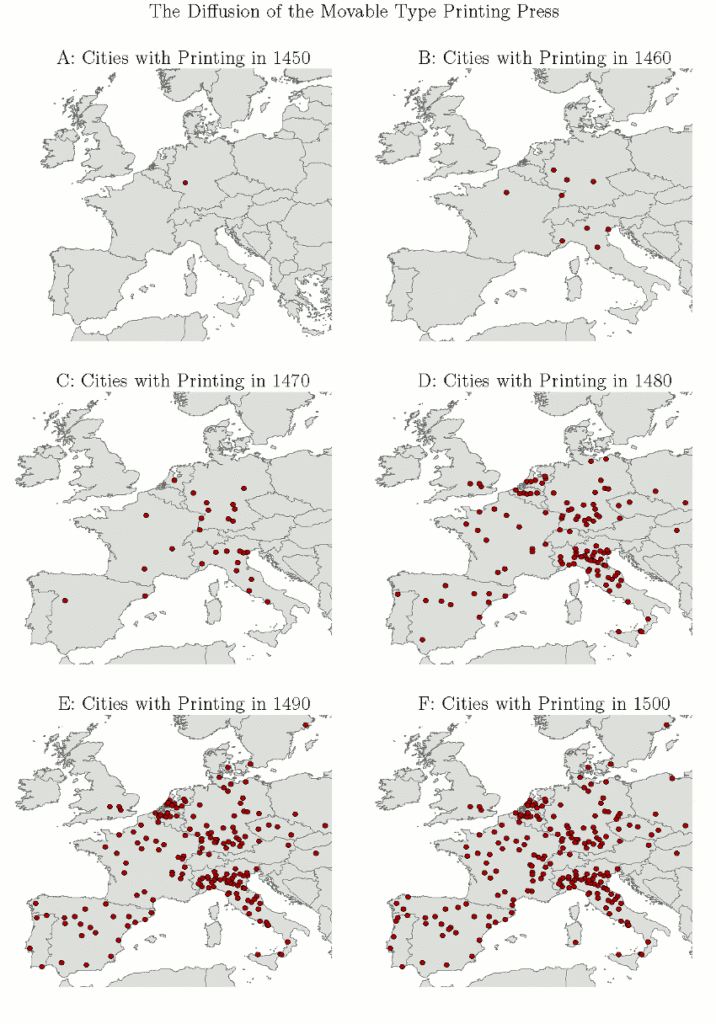
The Adoption Curve Is Accelerating
Technology adoption curves are steepening as real-time communications and global travel become ubiquitous.
In the US, 90% of households adopted the telephone in 80 years. This visual from Harvard Business Review shows that and how mobile phone adoption is occurring even faster.
Today, 4.66 billion people are online. If the internet was invented in 1983, then we have almost 60% of the world population using it in less than 40 years.
Blockchain Adoption
Earlier this year, we drew a Bitcoin adoption curve, Here it is:
We never labeled the X Axis with specific dates.
Like Yogi Berra once said, It’s tough making predictions, especially about the future.
We do know that over the past 5 years, the number of crypto users has increased 20 fold from 5 to 101 million.
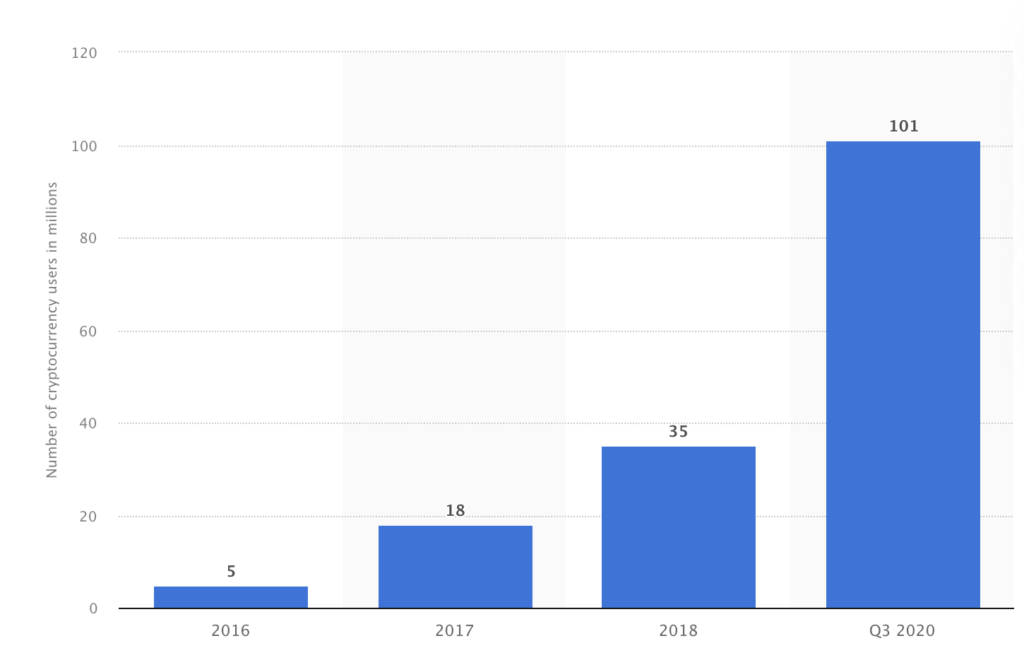
That’s a lot of people, but still less than 2% of the global population.
While we expect adoption to occur much faster than the printing press, it’s still going to take time.
Here are some related links:
Ideas, Technology, and Economic Change: The Impact of the Printing Press

